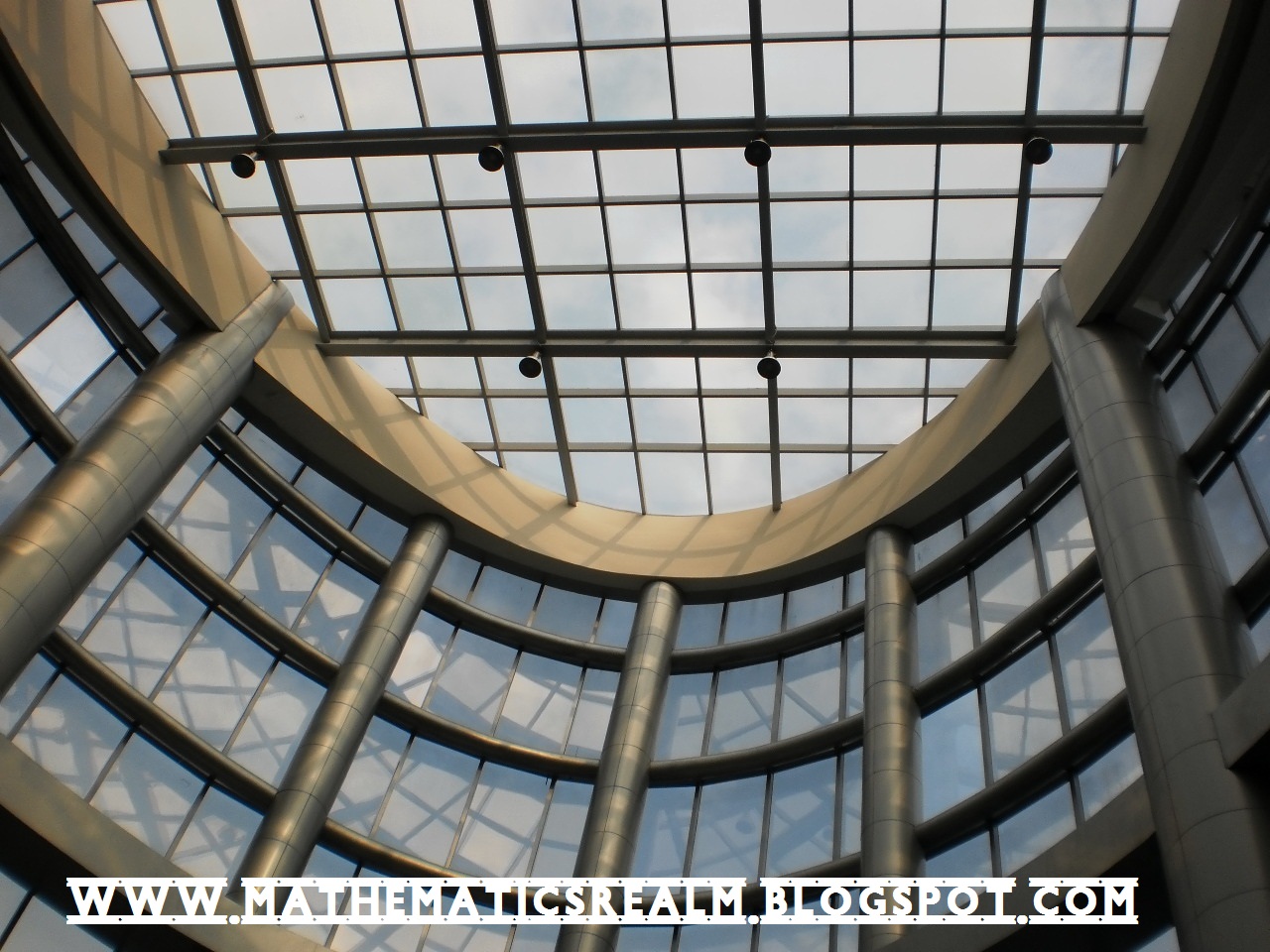THE BEAUTY OF MATHEMATICS 4
This is the fourth photo depicting the beauty and use of mathematics on famous places.
THE BEAUTY OF MATHEMATICS 3
This is the third photo depicting the beauty and use of mathematics on famous places.
THE BEAUTY OF MATHEMATICS 2
This is the second photo depicting the beauty of mathematics in our surroundings.
THE BEAUTY OF MATHEMATICS 1
This is the first of the series of photos appreciating math in the world.
HAPPY 40th ANNIVERSARY RUBIKS CUBE
This day is the 40th anniversary of the Rubik's cube, which was first introduced in Hungary.
LEARN AT MATHEMATICS REALM
This is the extension of the mathematics realm blog. It contains math lessons, tutorials, downloads, etc.
MATH ARTS 3
Another figure being formed from symmetrically rotated and transformed picture of a famous mall in Jakarta.
NUMBER PUZZLE 2
A very simple number puzzle you would definitely like. One is explained well and the other is given for you to try. Good luck!
NUMBER PUZZLE
This is a simple puzzle involving a pattern of numbers. Try to decipher the pattern and find the missing numbers.
BIG NUMBER PUZZLE
This is a simple puzzle of creating the largest possible number using the indicated numbers and symbols
CUBE COUNTING 2
This is the second part of the cube counting series. Just count the number of cubes being used in the figure.
LEARN AT MATHEMATICS REALM
This is an extension of the mathematics realm blog. It provides information, lessons and tutorials on specific topics from different areas of mathematics.
CONNECTING DOTS WITH LINES
This is one of the most common math puzzles. It involves connecting dots using a specified number of lines and following some conditions
CURVES FORMED FROM STRAIGHT LINES
These are curves approximated by the series of straight lines. You can test your creativity by forming a mathematical artwork using the curves.
HOW TO DIVIDE A SQUARE INTO FOUR EQUAL PARTS
These are some of the ways on how to get four equal parts in a square.
SQUARING NUMBERS NEAR 100 (Case 2)
Second part of two cases. This is the easiest way to square a number near and greater than 100.
SQUARING NUMBERS NEAR 100 (Case 1)
First part of two cases. This is the easiest way to square a number near and less than 100.
MULTIPLYING NUMBERS BY USING LINES
The easiest way of multiplying numbers using parallel and intersecting lines.
EARTH HOUR 2012!
This is to promote for the Earth Hour 2012 on March 31, 2012. Read more for details...
DIGITAL CIRCLISM
See the beauty and use of circles in different artworks. Can you guess who are in the images?
THE SIGNIFICANCE OF 40 DAYS IN THE BIBLE
This is the list of significant events in the Bible that have been done in 40 days.
BASIC MATH QUIZ PART I (Decimals and Integers)
This will test your knowledge about basic concepts in mathematics, specifically on decimals and integers.
SQUARING NUMBERS ENDING IN 5
This is the easiest way to square a number ending in 5.You can actually do this in seconds only!
PARALLEL LINES
Comparison between the definition of parallel lines in Euclidean Geometry and in Non-Euclidean Geometry.
MAZES
Aside from the usual form of mazes that we know, there are mazes that are computer generated, which also resemble some common objects or people.
DAYS OF THE MONTHS
This uses body parts to easily remember the exact number of days for every month of the year.
HOW FAR IS A STORM FROM YOU
A basic computation that can easily determine the distance of a storm from your location.
July 12, 2012
MULTIPLYING A NUMBER BY 5
July 4, 2012
CURVES FORMED FROM STRAIGHT LINES
The above figures used perpendicular lines. You can make the curve narrower by decreasing the angle being formed by the two lines.
Aside from the perpendicular lines, you can also use other shapes or polygons like a square or a circle. You can try using a triangle, a pentagon, a hexagon and so on.


.jpg)
.jpg)
small.jpg)


.jpg)
.jpg)





































(5).jpg)

(10).jpg)
(5)=120.jpg)
(5).jpg)
(10).jpg)
(5)+is.jpg)



























